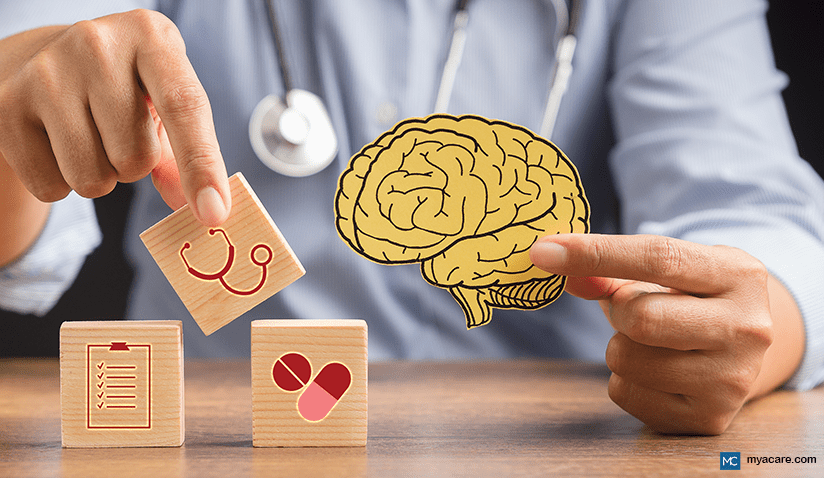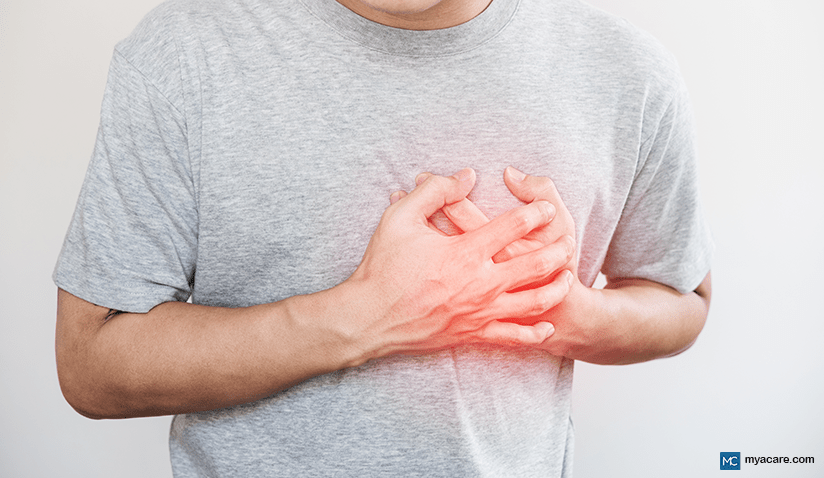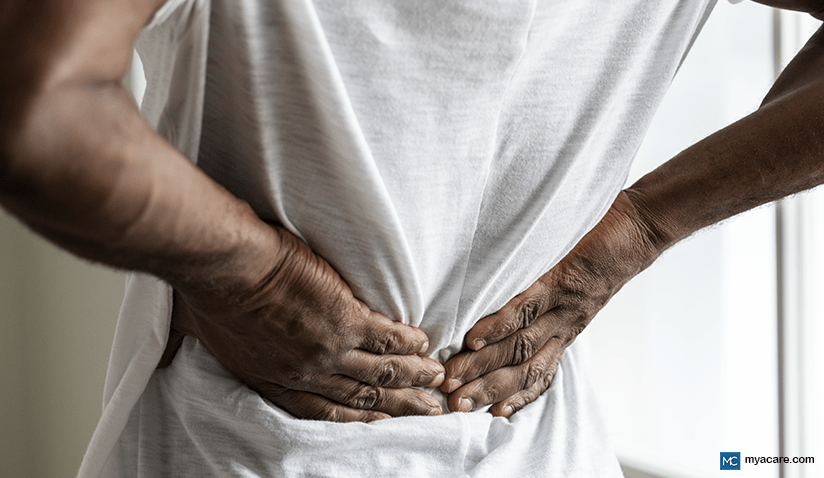STROKES: DEFINITION, WARNING SIGNS, CAUSES & MORE

Medically Reviewed by Dr. Sony Sherpa (MBBS) - August 27, 2024
Worried about getting a stroke? With the sudden passing of actor Luke Perry, it was proven that one can die of a stroke in their early 50s, raising alarm for many individuals. The truth is that while the majority of strokes occur in people above the age of 65, it is possible to get them at any time in one's life.
Recent statistics reveal that increasing numbers of younger people are suffering from strokes annually[1]. According to the World Health Organization, there are an average of 15 million stroke sufferers per year. Of that amount, 5 million people die from the stroke while another 5 million become disabled for life after the event.[2]
With strokes, timing is everything. Learn more below on what a stroke is and how you can best prevent one!
Stroke Definition
A stroke is a sudden event that occurs when the brain does not receive enough oxygen due to an internal blockage or burst blood vessels.[3]
In many cases, strokes cause varying amounts of brain damage to the parts of the brain that are oxygen deprived. This tends to result in some form of disability such as impaired speech, permanently lame body parts, or in the worst cases, death.
If the warning signs of stroke are heeded early in the event of one, then there is a higher chance that the person will survive with little to no damage. Timing is critical to stroke recovery and to preventing a fatal stroke.
10 Warning Signs of Stroke
Timing can mean life or death when it comes down to a stroke. Below are all the warning signs of stroke:
- Difficulty speaking
- Numbness, weakness or lameness in your face, arm or leg; particularly if only felt on one side
- Clumsiness or trouble keeping one's balance
- Difficulty walking
- Dizziness
- Sudden migraines
- Problems when seeing with one or both eyes
- Confusion
- Difficulty understanding what other people are saying
- Fainting or falling unconscious
If you experience any one of these warning signs, record the time that the symptom came on and immediately dial up an ambulance.
How to Test If You're Having a Stroke F-A-S-T!
A straightforward method used to check if you have a stroke is known as the FAST method[4]. This method helps you to quickly check yourself for all the most common symptoms of stroke.
This instructive acronym is easy to remember and places an emphasis on just how important timing is when a stroke is coming on!
- (F)ace - Look in the mirror and smile or ask somebody else to assess your smile for you. If one side of your face is drooping, then that is a warning sign of stroke.
- (A)rms - Raise both your arms in front of the mirror or in front of somebody else and check or ask them to see if one arm instantly drops down or if there is difficulty lifting one arm.
- (S)peech - Say a short sentence or phrase and listen out for any slurred language or speech. It is best to get somebody else to listen too so they can double-check, as depending on what part of the brain is compromised, you may not be able to decipher speech or discern an abnormality.
- (T)ime - If you have any one of the above symptoms, call an ambulance immediately and write or record the time the symptoms began.
Why Strokes Happen & Who Is Most at Risk
Strokes usually happen due to the formation of plaques in the bloodstream in combination with high blood pressure. Plaques are essentially soft deposits that are made up of cholesterol, calcium, cellular waste products, toxins and protein[5]. They usually form by attaching to the walls of veins and arteries.
In some cases, plaques undergo aggregation, where they oxidize and become hard lumps. This can especially be seen in patients who have osteoporosis or a condition where calcium does not remain inside the bones and forms lumps in the blood stream.
When hard or soft plaques break off, they travel loosely in the bloodstream and may block a smaller capillary in or close to the brain. Plaques can also build up to the point that they create a blockage. This forces the heart to pump faster in an attempt to shift the blockage - however, in the event that it is not capable, a stroke will occur.
When hard plaques break off, they have the potential to cut or bruise the walls of your arteries and veins, which may cause more damage in the event of a stroke.
Strokes can also happen as a result of high pressure where blood vessels rupture in the brain. Those involved in vehicle accidents or similar physical injuries may suffer a stroke in this way.
In general, people who are at the highest risk are those who have high blood pressure, poor cardio and arterial health, high blood cholesterol or calcium levels and who are overweight. Alcoholics and drug addicts are also at high risk of suffering from a stroke.
13 Major Stroke Risk Factors
Any of the following conditions and lifestyle choices will increase the risk of getting a stroke[6].
1. Diabetes
Diabetes tends to increase the risk of stroke by more than double. This is because having high blood sugar levels contributes to the formation of plaques, which may have the potential to block blood flow and cause a stroke.
2. Diseases of the Arteries
Naturally, diseases of your arteries such as atherosclerosis or carotid disease will increase the risk of stroke, just as any disease or condition that would promote cholesterol or arterial plaques to form.
In the case of carotid disease, the carotid arteries that supply blood to the brain become damaged due to a hardened fat or calcium deposit which directly interferes with the blood supply leading into the brain. This can easily lead to a stroke.
3. Excessive Drinking
Alcohol puts pressure on your system as a whole and contributes in many ways to increasing your risk of stroke, such as[7]:
- Increasing blood pressure
- Containing high amounts of sugar or calories, which can lead to being overweight
- Changing the way your body responds to insulin can contribute to diabetes or irregular blood sugar spikes that increase blood pressure
- Contributing to an irregular heartbeat and poor cardiovascular health which can increase the risk of stroke by five times
- Causing liver damage which will impair the body's ability to clot blood and heal ruptured blood vessels
The above consequences are worse for those who drink excessive amounts of alcohol every day or who binge drink once in a while.
According to the American Stroke Association, more than one drink per day for women and two drinks per day for men will increase blood pressure.
4. Gender
Unfortunately, not all factors that increase the risk of stroke are within our control - gender being one of them.
Women are at a higher risk of getting a stroke than men are. On the other hand, men are more prone to receiving a stroke at younger ages than women - a risk factor that Luke Perry seems to prove true.
5. Genetic Makeup
Genetics is another largely uncontrolled factor when it comes to receiving a stroke.
If somebody blood-related to you in your immediate family has had a history of stroke, then you are more likely to suffer from a stroke.
6. Heart Disease
Having poor heart health, cardiovascular disease or atrial fibrillation (an irregular heartbeat) places one at a higher risk of stroke. When the heart does not beat in a regular way or is compromised somehow, it can contribute to irregular blood pressure as well as blood clots in the heart that can lead to stroke.
7. High Blood Pressure
High blood pressure is one of the leading causes of stroke worldwide and is therefore one of the most important risk factors.
If your blood pressure is constantly on the higher side, consult with a healthcare provider to keep it in check and prevent stroke.
8. High Cholesterol
Naturally high cholesterol can lead to blocked arteries easier than low cholesterol.
There are two types of cholesterol, one being LDL cholesterol and the other being HDL cholesterol. Having a higher amount of HDL cholesterol is not as bad as LDL, as HDL cholesterol helps to clear your veins and arteries of LDL cholesterol, keeping everything clear, healthy, and in balance.
9. Obesity & Living a Physically Inactive Lifestyle
Obesity and not getting enough exercise can contribute to multiple problems associated with stroke such as poor heart health, high cholesterol, high blood pressure, bone mineral density loss, and poor arterial health.
10. Prior Stroke
If you've had a stroke before, whether mild or severe, the chance of getting a stroke again is very high.
For those who have had prior strokes, it is very important to lead a healthier lifestyle and consult with a healthcare provider on how to prevent another stroke from occurring.
11. Sleep Apnea
Sleep apnea is a condition where part (or sometimes all) of the airways are blocked while one is asleep. As this deprives the body of oxygen in general, it may cause a stroke. The severity of sleep apnea determines how much the person is at risk of stroke.
12. Smoking
Smoking not only reduces blood oxygen levels, but it damages blood vessels, causes spikes in blood sugar levels (which can create high blood pressure) and contributes to high cholesterol. All of these factors dramatically increase the risk of stroke.
13. Transient Ischemic Attacks
Transient Ischemic Attacks (TIAs) produce stroke-like symptoms that do not last, however they can lead to a major stroke and increase the risk of stroke tremendously. If you or somebody you know experiences TIAs, then treating them is one of the best ways to prevent or reduce the risk of stroke.
As soon as the symptoms begin, call an ambulance and seek emergency medical attention immediately.
Lifestyle Changes for Stroke Prevention
The good news is that following a healthy lifestyle can lower the risk of stroke. Eating plenty of fresh fruits and vegetables, exercising, meditating and restricting junk food, alcohol and smoking are of major benefit, amongst a few other things!
Here are some tips for preventing or reducing your risk of stroke[8]:
- Don't smoke and avoid second-hand smoke
- Exercise and be physically active
- Eat a greater variety of fresh fruits, vegetables, nuts, fish, beans and lean meat
- Consume larger amounts of raw foods
- Bake, broil, and steam foods and avoid frying
- Avoid foods high in trans fat, artificial additives, sodium and sugar
- Limit your alcohol intake or stop drinking completely
- Use healthy fats like olive oil
- Take up meditation to lower stress and blood pressure
- Maintain a healthy weight
- Seek emotional support
- Have regular medical checkups
Post-Stroke Rehabilitation
For those who have suffered a stroke, the damage can be truly debilitating. Neuroscientists and researchers have been working hard for decades in an attempt to help rehabilitate those who have had strokes.
Here are some of the therapies currently known to help those with post-stroke damage[9]:
- Motor skills training and workouts to improve coordination
- Constraint-induced therapy where one spends more time attempting to use their affected limbs than their unaffected ones.
- Electrical stimulation to help worn muscles contract again
- Non-invasive brain stimulation such as magnetic stimulation
- Activities that enhance neuroplasticity and neurogenesis such as learning a new skill, playing an instrument, or drawing
A few experimental therapies are also being looked at, such as stem cell therapy, however, these treatments are still relatively new, and not much is known yet about how they work.
Alternative medicine may also provide relief as a supporting treatment. Examples include acupuncture, herbal therapies, and massage.
While it is nearly impossible to know if you will suffer from a stroke at some point in your life, it is possible to know what will increase your risk and the measures you can take to lessen your chances. For proper guidance and care in either stroke prevention or recovery, it is vital to find the right healthcare practitioner to work with and to follow their advice. To search for the best stroke rehabilitation providers in India or Thailand, please use our free search engine.
References



